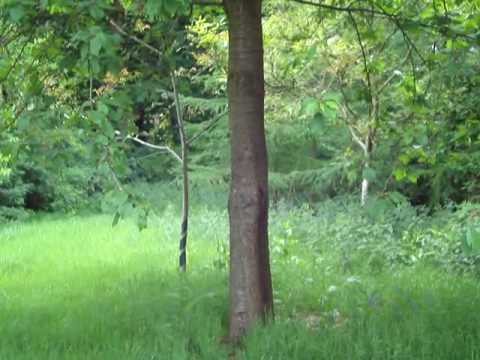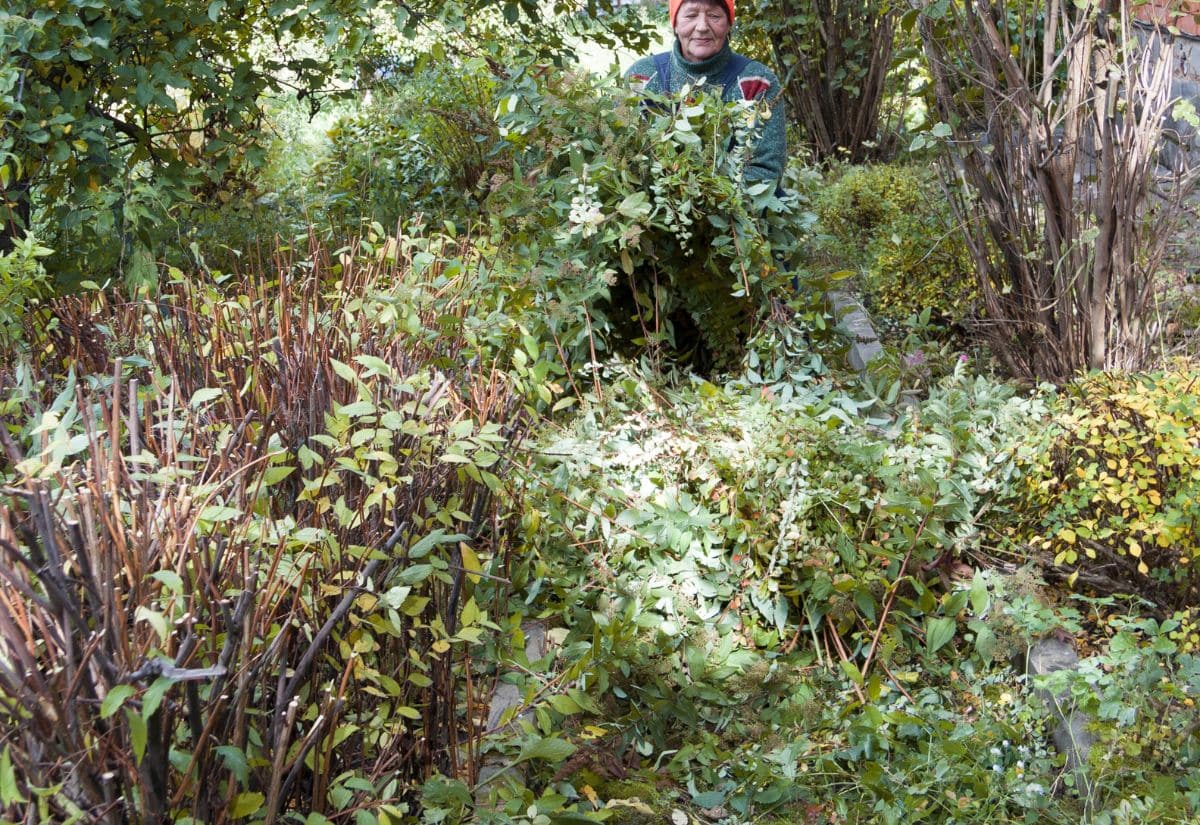
Fall is a busy time for gardeners, and a main task of this season is pruning! While from September to November the plants in my garden are getting ready to “go to sleep” (dormancy), I fill my days helping them along for the cold season, cutting branches to avoid diseases and infections, and to give them the best possible start next spring!
But there are many types of pruning to do in September, October and November, from the little trim to overgrown shrubs and hedges, to crown thinning in trees and even cutting down whole perennials! So, you might wonder, what should you prune in September to to November, and how do you apply the right technique for effective late-year pruning?
Read on to learn which types of pruning are necessary in the fall and which plants in your garden will benefit from it.
How to Decide Which Plants to Prune in Fall, from September to November?
You can prune most plants in the months from September to November, as you can see. Fruit trees can go under the scissors in early spring too, but you can really act on all plants that have gone or are going dormant.
After they have fruited, they will take a rest, and this usually happens in fall, at some time from September to November, and you will tell it by their leaves going yellow and brown if they are deciduous, while for evergreens, I would wait till after the first frost.
A Good Reason to Prune Plants in Fall
It is true that in many cases you can wait till spring to prune these plants. But you take risks with their health, and then I have another reason to do it sooner rather than later… Spring is such a busy time for me in my garden that I don’t have time to catch up with what I didn’t do before winter! And I think it’s the same for most gardeners.
And it also gives me some wood for my fireplace…
10 Pruning Jobs to be Done in Late Fall, from September to November
Prune Fruit Trees to Keep Them Small:
I prune fruit trees that flower early in spring in fall, so I don’t risk cutting new buds when they are waking up from winter. These include cherries, apples, pears, peaches and plums. But some of them can fruit till late (pears and apples) so I wait till late in the season, when the harvest is over and they have dropped their leaves to get my tools and gloves out.
You can also prune pomegranate trees in late fall, mainly November, but only after the fruits have matured, or you can wait till spring.
This is not the time to prune late fruiting trees though; oranges, lemons, olives, persimmons etc. will wait till late winter!
Prune Berry Bushes
Fall is also a good time to prune blackberries, raspberries, blackcurrants, gooseberries, loganberries and the like will be much better and safer in winter if you do.
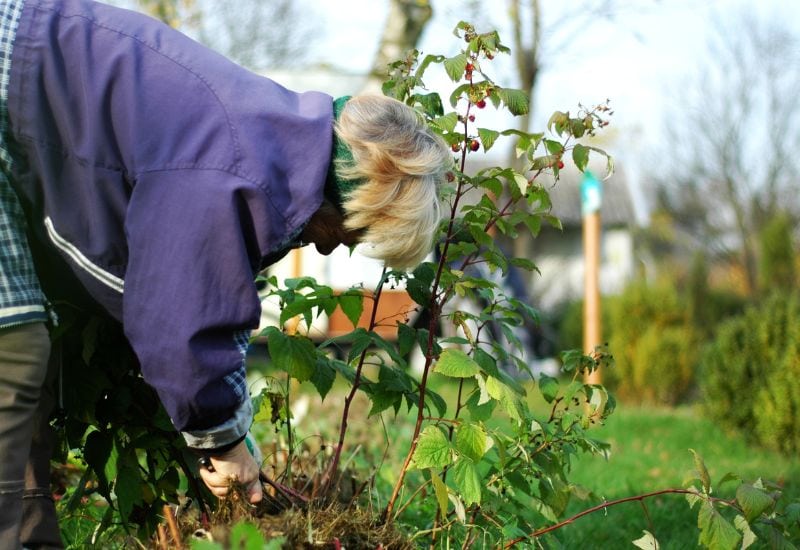
Of course, raspberries need to be cut back totally, and you can do the same with blackberries, because they can grow fast and strong and even become invasive. I find it’s best to do it from September to November, because in spring, new shoots will have cropped up, and you need a good experienced eye to tell them apart.
In any case, all the dried canes and branches will be just a burden on soft ad bushy fruiting plants in the winter months, and a door for fungi and pathogens to creep into them!
Crown Thinning Your Fruit Trees
Crown thinning is an important and quite deep type of pruning I do in fall to some trees. It means cutting some branches, so that they are not overcrowded and badly ventilated in spring, when they become productive.
Too many branches on some fruit trees mean smaller fruits, and it also means bad ventilation for all varieties.
I choose the stronger branches, those that look healthy, and I keep them; I also cut crossing branches, and those that are too close to each other. Yes, crown thinning is something to do with a sharp pruning saw, for a neat cut at about 1 inch (2.5 cm) from the base.
But which are the trees that need crown pruning at some time between September and November? Mainly early fruiting trees, like cherries, apples, peaches and some pears. I could do it in late winter or spring too, but only before the first leaf and flower buds appear, but I prefer to avoid the risk.
I also crown thin most deciduous decorative trees in this season, and like with fruiting ones, I know when I can start pruning them because the leaves have yellowed, browned, have fallen or are falling.
However, if I crown thin some fruit and decorative trees in fall (especially apricots!) I like to seal the pruning wound with mastic gum, to protect them from infections in the cold and wet winter season.
Of course, I don’t crown thin my olives, oranges and lemons, because ai would prune off their fruits, but you can ho ahead with pomegranates and even persimmons, but only after you have harvested them and the leaves are dying.
Crown Lift Your Tree
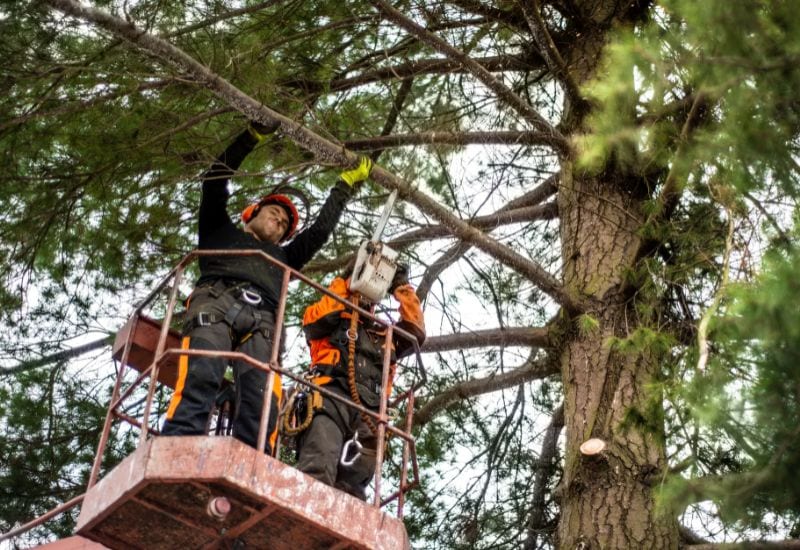
Fall is also the time to lift the crowns of the same trees I have thinned with pruning, but I also do it with conifers. If they are still young and their branches are too low, September to November is a good time to cut the lower branches.
Crown lifting is easier than crown thinning, because your choice is straightforward: prune the lower branches, to the height you want, or can reach…
You can only prune a maximum of one third of the branches, or the tree won’t have enough, so, it depends on the age and the height of the specimen you are working on.
Why do I like to crown lift some conifers as well between September and November? True, the ideal time to prune these trees is winter…
But in cold countries, heavy snow can weigh down their branches, and the whole job becomes messy, wet, cold and even dangerous. They go dormant after the first severe frost, so, I wait till then and save myself an unpleasant and imprecise pruning day.
Crown lifting is a type of pruning that will prevent trees from investing energy into lower branches in spring, promoting their upright growth.
Again, like with all big branches I cut in fall, I use mastic gum to protect the pruning wounds, and I use a sharp and sterile pruning saw.
Cut Back Herbaceous Perennials
My gardening becomes very busy with pruning from September to November, because I grow many herbaceous perennials in my borders and flower beds, and most need cutting back as soon as they go dormant. And this happens in the fall.

To cut back is a drastic type of pruning: it literally means cutting the whole plant to ground level (or almost), and lots of herbaceous perennials need this treatment at some time between September and November, again, as soon as the foliage has wilted.
This can happen at different times between September and November, depending on the variety of herbaceous perennial and on the climate, so, it is not something I can do in one day…
I keep checking my herbaceous perennials all through the fall, and when they go yellow or brown, I take out my loppers or shears (depending on how hard the stems are), sterilize them, and cut them back one by one.
So, keep an eye on your daylilies, coral bells, plantain lilies, peonies, yarrow, catnips, blanket flowers, astilbe, lilies, astilbes, coneflowers, sneezeweed, garden phlox and most other deciduous herbaceous perennials, because at some stage between September and November they will need pruning.
Prune Your Vines and Other Climbing Plants
There are some vines too that I prune in the months of fall, and the exact month, September, October or December depends on the climate and when the leaves have dropped.
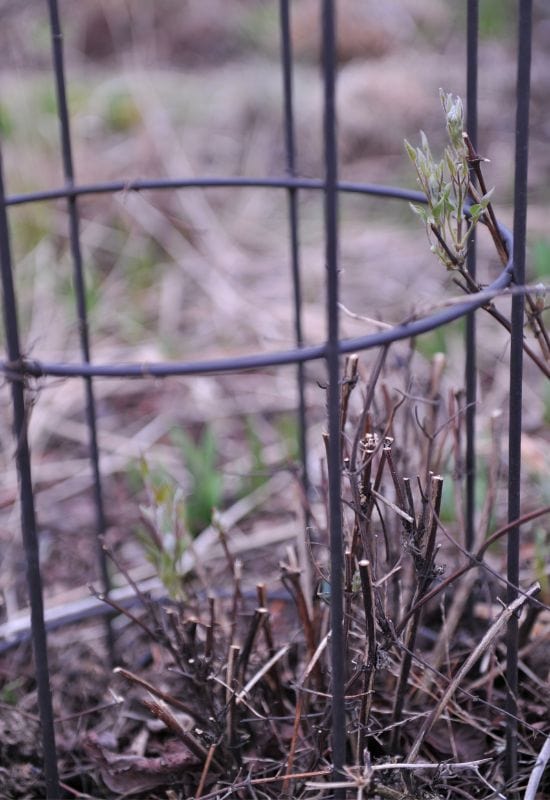
So, the passion flowers and clematis on my trellises get a healthy trim in fall, as do honeysuckle, trumpet vine, jasmine, and if I am late with my wisteria, she too goes under the scissors, though she like it best after flowering in late summer.
If bougainvillea has grown too much (and she often does) a fall pruning will keep her neat, though the best time would be late winter or early spring.
In cooler climates, you should prune kiwi vines in late fall, because then, they have fruited and gone dormant, but in warmer zones, you should wait till winter.
You can also prune grapes after vintage and as the leaves drop. But I thin it’s best done in early spring, before the first buds appear. There’s a saying among wine farmers: grapes will only get out of dormancy after the last frost! While early pruning may allow infections into the grape vines in the cold and wet season.
Prune Flowering Shrubs
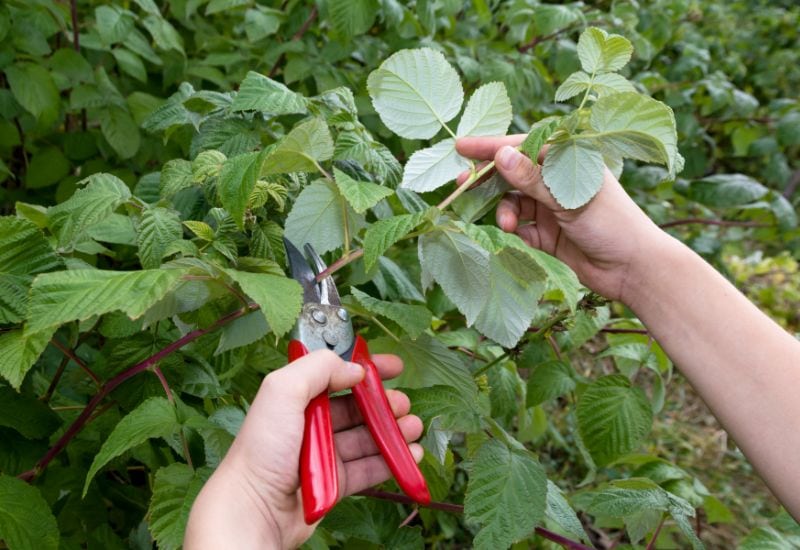
As September comes, I start checking my shrubs too, because many will need pruning, as soon as the leaves die off. Again, this will happen at different stages all the way till November, and the process is similar to thinning tree crowns, only the branches are smaller.
So, I prune off all the dead or diseased branches, crossing ones, and those that are too close to each other, so my shrubs are well ventilated and they don’t have infections that can progress during the cold months, or tissue that can break, and let in fungi, bacteria and viruses.
Fall is the time to prune azaleas and rhododendrons, lavender, hydrangeas, weigela, ninebark, kerria, deutzia, angel’s trumpets and loropetalum, but not forsythia – wait till just after the bloom for that.
When roses drop leaves, from September to November, it is also time to give them a good fall pruning, which is different from the main, spring one that they need.
Only cut off dead, diseased and crossing branches or canes, thin down the middle of the shrubs, and you can reduce branches to half size, to help them focus their energy. With roses, I like to use mastic gum too, because they are so prone to infections!
Prune and Overwinter Your Perennial Vegetables
I also do some pruning in my vegetable garden from September to November, because some plants are perennials, even if few people know it, and I like to keep them as such.
For example? Jerusalem artichokes, which I simply cut down to 4 to 5 feet tall (1.2 to 1.5 meters) so strong winter winds do not damage them.
But I also act early on my peppers, chilis and eggplants. By September, they have already given me a good crop, but they still have some fruits on.
So… To help them focus on these, and not on new ones, I cut all the branches that have no fruits on them, and absolutely all the ends that are still trying to flower!
This gives me bigger peppers and eggplants till late in the season…
Removing Diseased Or Dead Branches From Your Hedge Plants
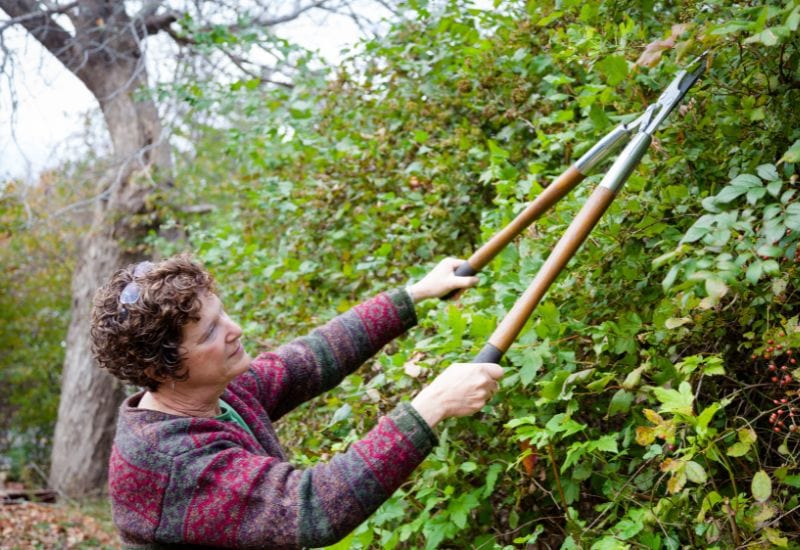
Hedges get lots of pruning during the year, but the fall one is a bit special, I find, and for two reasons: my trimming efforts last longer, and I also thin them.
Of course, the trim I give my hedges between September and November (I do it late, because I live in a warm region, but aim to do it around the first day of frost), lasts longer because the shrubs go dormant, and they keep in shape till spring!
I also use this time to thin my hedges though. I prune all sick and dead branches, and if they are becoming too thick, I cut off branches that are too close, so they will have room to grow when they come back in spring, and better ventilation during winter.
All hedges that don’t have a special fall spectacle can benefit from pruning in fall, whether they are evergreen or not. So, I avoid varieties that have berries on, for example, like coral berry, winterberry chokeberry.
Other Pruning to Be Done in Fall
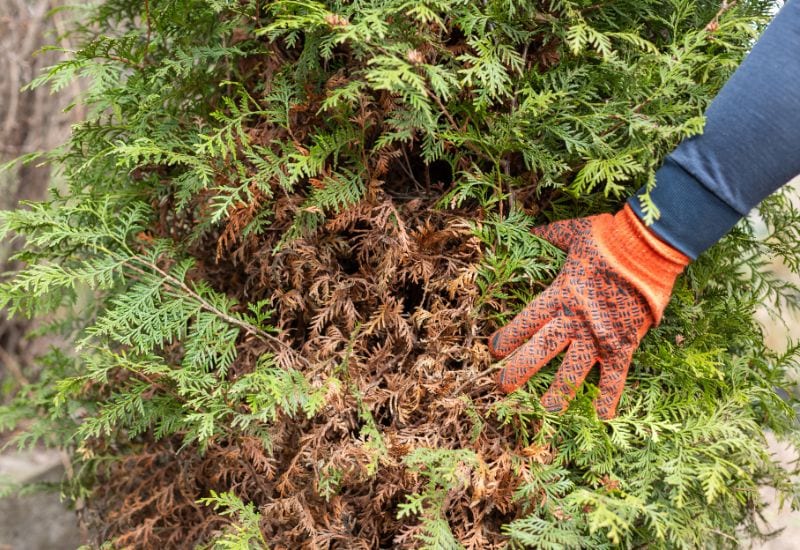
Apart from all these plants we have seen, that need main or substantial pruning in the months from September to November, fall is also the time to “tidy up” all the others in your garden, even if the are still active!
By this, I mean cutting off dead, diseased, rotting branches and foliage. Don’t leave them on over winter, or they can only worsen. So, while ai have my secateurs and pruning saw out of my shed, after doing these big jobs, I also look around my garden and give a “healthy treat” to other trees, perennials, shrubs, vines etc. that may need it!
A Final Tip About Pruning, in Any Season
I am leaving you with a final tip, because you have a lot of pruning to to by late November; always sterilize your blades when you move from one plant to the next! Otherwise, you will pass diseases on with them…

Written By
Amber Noyes
Amber Noyes was born and raised in a suburban California town, San Mateo. She holds a master’s degree in horticulture from the University of California as well as a BS in Biology from the University of San Francisco. With experience working on an organic farm, water conservation research, farmers’ markets, and plant nursery, she understands what makes plants thrive and how we can better understand the connection between microclimate and plant health. When she’s not on the land, Amber loves informing people of new ideas/things related to gardening, especially organic gardening, houseplants, and growing plants in a small space.

